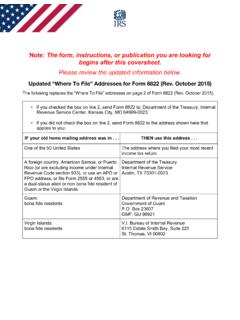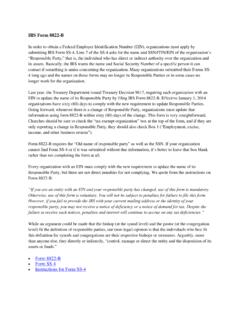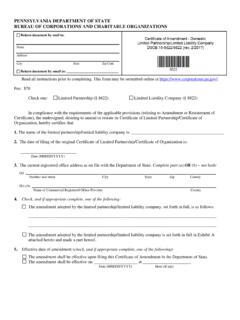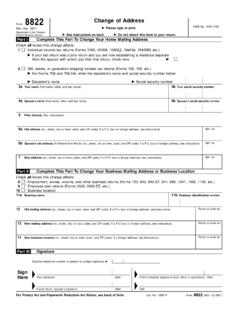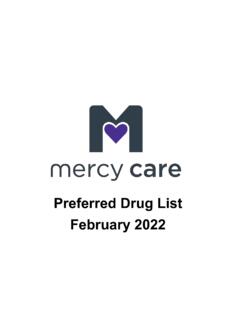Transcription of 8822B BFTMF Fitting Guide - CooperVision
1 biofinity toric multifocal lens Fitting guideBiofinity toric multifocal lenses combine the proven Fitting characteristics and technologies of the biofinity toric and biofinity multifocal rate on initial Fitting *93%STEP 1 | Spectacle refractionStart with an up-to-date spectacle refraction, including add power. Determine ocular VisitDETERMINE CONTACT LENS PRESCRIPTIONSTEP 3 | Toric contact lens trial fit (optional)Use biofinity toric fit set to confirm the toric trial contact lens parameters. Adjust axis based on rotation, rounding to the nearest 5 . Step 5 | Order trial contact lenses based on prior stepsSTEP 4 | Add powerUse this table to determine D or N contact lens design, based on the spectacle add power:Non-dominant EyeDDNNAdd+ + + + EyeDD DDSpectacle Add+ , + , + + , + + , + + or above STEP 2 | Toric contact lens power and axisDetermine the sphere and cylinder powers and axis, rounding to the nearest 5 and corrected for vertex reverse side for follow-up visit steps and clinical tips.
2 >>Recommended Trial Contact Lens Power OD + x 020 Add N OS + x 165 Add DExamples: Spectacle Rx - OS Dominant OD + x 020 Add + OS + Add + * CVI Data on file 2018. Non-dispensing, subject masked, randomized, bilateral, cross-over short-term clinical evaluation. 27 astigmatic, presbyopic soft CL wearers at 2 sites (UK & US) fitted using CVI fit Guide . 2020 CooperVision 8822B 02/20 Clinical tips Always fit off an up-to-date spectacle prescription. Prescribe maximum plus power for distance vision; do not over minus. Choose the lowest add power when possible; do not overprescribe the add power. Use this biofinity toric multifocal Fitting Guide only for this lens. Check patient s vision binocularly with room lights on. - Assess near vision with their handheld device or other reading material. - Assess distance vision in surrounding environment under normal lighting SPECIFICATIONSM aterialWater Content Dk/tBase CurveDiameter Wearing & Replacement ScheduleSphere Powers (D) Cylinder Powers (D)Axis Add Powers (D) Lens Designcomfilcon A48%116 (at ) wear or extended wear to ; steps to + ; steps + to + ; to ; steps5 -180 , 5 steps+ , + , + , + Lens, N LensThe eye care professional retains the independent clinical judgment on how to fit and prescribe contact additional support, contact the CooperVision Multifocal Fitting Consultants at Option #4 or visit OPTIONALTips for follow-up visit one week after trial contact lens fit patient requires further enhancement to distance or near visual 1 | Evaluate binocular visual 2 | Perform over refraction using hand-held trial lenses (avoid using a phoropter).
3 FIRST OPTION: To improve either distance or near vision, modify vision by +/- in the eye that needs improvement. SECOND OPTION (if needed): To improve near vision add + to the ADD power of the eye that needs contact lenses will settle quickly, allow patients to adapt to contact lenses for a minimum of 15 minutes before assessing vision. STEP 1 | Assess toric orientation and general contact lens fit. STEP 2 | Assess vision binocularly. If patient is 20/30 or better at distance, the patient should return one week later. If binocular vision is unacceptable, perform an over-refraction using loose hand-held trial not use a improve distance vision, add +/- to the eye that results in the greatest improvement in vision (most likely dominant eye). Adjust contact lens distance sphere improve near vision, add +/- to the eye that results in the greatest improvement in vision (most likely non-dominant eye). Adjust contact lens distance sphere power without changing the add power.
4 STEP 3 | If necessary, order patient s new contact lens Trial Contact Lens Fit Assessment


